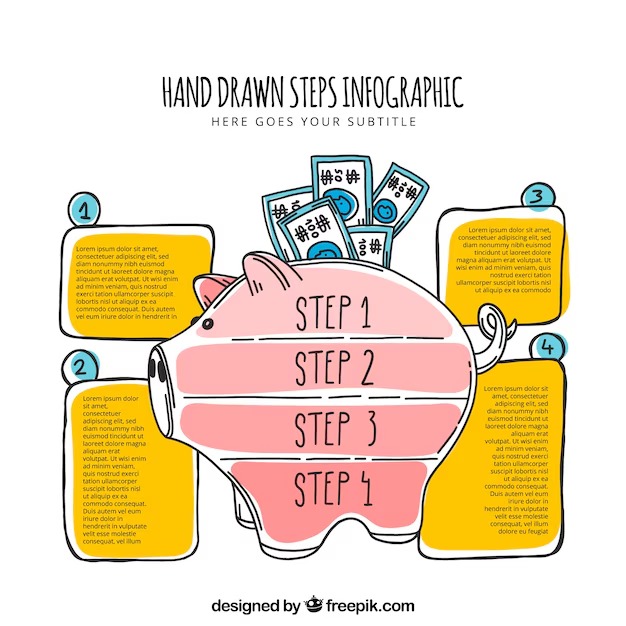How to Successfully Pack and Ship Products from Home for Your Small Business Ecommerce

How to Successfully Pack and Ship Products from Home for Your Small Business Ecommerce
Exploring opportunities to embark on entrepreneurial endeavors has never been more accessible. In a rapidly changing environment, individuals are increasingly drawn to the flexibility and independence that come with venturing into commerce from the comfort of one’s residence. As a result, numerous innovative methods have emerged, allowing aspiring entrepreneurs to navigate the complexities of logistics with ease and efficiency.
Understanding the essentials of distribution is crucial for success in this domain. As potential ventures flourish, finding a reliable and cost-effective way to deliver products becomes paramount. This not only impacts customer satisfaction but also affects overall operational efficiency. Therefore, leveraging practical methodologies and resources can enhance the journey of those looking to engage in retail while maintaining a balance between affordability and reliability.
By embracing contemporary strategies in cargo management, individuals can significantly simplify their processes. This shift enables them to focus on growth and customer engagement rather than being bogged down by logistical challenges. Ultimately, seeking out effective mechanisms for product transit will pave the way for a successful and sustainable endeavor.
Choosing the Right Business Model
Selecting an appropriate framework for commerce is crucial for achieving success. Various models differ significantly in structure, operations, and customer engagement. Understanding these distinctions will guide aspiring entrepreneurs in making informed decisions that align with their goals and resources.
| Model Type | Description | Pros | Cons |
|---|---|---|---|
| E-commerce | Online sales of goods or services directly to consumers. | Broader reach, lower overhead costs. | High competition, dependency on technology. |
| Subscription | Recurring revenue model where customers pay regularly for ongoing access. | Steady income, customer loyalty. | Client retention challenges, potential market saturation. |
| Drop shipping | Retail fulfillment method where a store doesn’t keep the products it sells in stock. | No inventory costs, easy product range expansion. | Lower profit margins, reliance on suppliers. |
| Freemium | Offering basic services for free while charging for premium features. | Large user base potential, easy to attract customers. | Conversion to paid users can be difficult, high support costs. |
Understanding the diverse options and their impacts allows for strategic selection, paving the way for sustainable growth and customer satisfaction.
Identifying Your Target Market
Understanding the audience that will engage with your offerings is fundamental to success. Recognizing who benefits from your products or services allows for better strategies and enhanced customer satisfaction. An accurate profile of potential clients will guide marketing efforts and improve overall effectiveness.
To pinpoint your ideal demographic, consider the following factors:
- Age group: Identify the specific age range that relates to your offers.
- Gender: Understand if your product appeals more to one gender over another.
- Location: Determine where your customers reside and how geographical factors may influence their purchasing habits.
- Income level: Analyze how financial capability impacts the willingness to buy.
- Interests and hobbies: Recognize what passions your clientele has that align with your products.
- Buying behaviors: Study how frequently your target audience makes purchases and their preferred shopping methods.
Once these characteristics are outlined, create personas that represent your ideal customers. This approach allows for tailored marketing tactics that resonate on a personal level. Data collection through surveys, interviews, or social media insights can further refine this understanding.
Regularly revisiting and updating your target market profile is crucial, as trends and consumer preferences evolve. An adaptable strategy not only attracts attention but also fosters lasting relationships with your clientele.
Essential Tools for Home Entrepreneurs
In today’s dynamic landscape, individuals striving for independence and flexibility require a set of effective resources to facilitate their endeavors. These instruments not only streamline processes but also enhance productivity, enabling creators to focus on innovation and growth. Having the right apparatus at your fingertips can make a substantial difference in achieving success.
Communication and Collaboration Platforms
Effective interaction is crucial for anyone looking to build connections or manage a team. Utilizing platforms like Slack or Microsoft Teams can improve correspondence, allowing seamless chat and file sharing. For video meetings, tools such as Zoom or Google Meet enhance engagement and foster collaboration, ensuring that every participant is included in discussions regardless of their location.
Project Management Software
To keep tasks organized and deadlines in check, adopting project management tools like Trello or Asana is invaluable. These applications provide a visual overview of ongoing activities, enabling users to prioritize tasks efficiently. They often include features for tracking progress and collaborating on specific assignments, ensuring that projects stay on track and within time limits.
Understanding Shipping Options for Startups
Selection of appropriate delivery methods is crucial for emerging enterprises. The choices made can significantly influence customer satisfaction, operational efficiency, and overall growth potential. Analyzing various alternatives allows new ventures to tailor their logistics strategies to meet unique demands and create a seamless experience for clients.
Types of Delivery Services
Numerous carriers provide distinct facets of logistics that cater to various needs. Broadly, these services can be categorized into premium, standard, and economy options. Premium services often come at a higher price but promise expedited transit, ensuring time-sensitive shipments arrive quickly. Standard alternatives strike a balance between affordability and reliability, making them suitable for most everyday deliveries. Lastly, economy choices offer the cheapest rates for less urgent packages, appealing to budget-conscious entrepreneurs.
Choosing the Best Option
When determining the most suitable method, factors such as delivery speed, cost, and package dimensions must be evaluated. Additionally, assessing target markets and geographic reach is essential to align service options with clientele preferences. Developing a flexible logistics plan not only enhances operational capabilities but also fosters customer loyalty by providing tailored delivery choices that meet their expectations.
Streamlining Order Fulfillment Processes
Efficiently managing the flow of orders from inception to delivery is crucial for success. The process involves various stages that need to operate seamlessly to ensure customer satisfaction and repeat business. By refining these steps, one can enhance overall productivity while minimizing errors and delays.
A well-organized approach to handling orders significantly reduces the time it takes to process transactions. Automated systems can assist in tracking inventory levels and managing customer data, contributing to a smoother operational flow. Implementing such technology can eliminate repetitive tasks, enabling more focus on strategic decision-making.
Moreover, establishing clear communication channels among team members can foster collaboration and expedite problem resolution. A transparent workflow encourages accountability and ensures everyone is aligned on their responsibilities. In addition, regular training sessions can keep staff updated on best practices, optimizing their performance and boosting morale.
Finally, gathering feedback and analyzing performance metrics is essential for continual improvement. By evaluating each stage of the fulfillment process, areas for enhancement can be identified, leading to more effective strategies down the line. This iterative approach allows for a dynamic response to changing market demands and customer expectations.
Building Strong Customer Relationships
Establishing meaningful connections with clients is essential for any endeavor, ensuring loyalty and satisfaction. Engaging with consumers beyond transactions cultivates trust and encourages repeat interactions. A solid rapport can lead to invaluable feedback, which helps refine offerings and enhance the overall experience.
Clear communication plays a pivotal role in nurturing these relationships. Consistently updating clients about products, services, or any changes fosters transparency and demonstrates reliability. Moreover, promptly addressing inquiries and issues not only resolves challenges but also reinforces commitment to customer care.
Personalization is another crucial aspect in forming deep ties. Tailoring experiences based on individual preferences shows attentiveness and appreciation. Implementing targeted rewards or recognition for loyal customers can further strengthen this bond, making clients feel valued and understood.
Utilizing various channels for interaction allows for broader engagement opportunities. Social media, email newsletters, and direct messaging are effective ways to reach audiences, offering updates or engaging content. Listening to consumer feedback through these platforms can significantly inform improvement efforts.
Ultimately, prioritizing customer relationships creates a foundation for sustainable success. Loyal clientele not only contribute to steady growth but often recommend services to others, serving as ambassadors. Investing time and effort into relationship-building is a strategic approach to ensuring long-term achievements.
Q&A: Business shipping products from home
What services does the post office offer for small businesses?
The post office provides a variety of services for small businesses, including mailing and shipping options, package tracking, and bulk mailing discounts. These services can help businesses manage their shipping needs efficiently and cost-effectively.
How can a mailer improve the effectiveness of a marketing campaign?
A well-designed mailer can capture the attention of potential customers and convey important information about your products or services. By using eye-catching graphics and clear messaging, a mailer can enhance engagement and drive sales.
What type of printer is best for printing shipping labels?
A thermal printer is often the best choice for printing shipping labels due to its speed and efficiency. Thermal printers produce high-quality labels that are durable and resistant to smudging, making them ideal for shipping purposes.
Can I use the post office for international shipping?
Yes, the post office offers international shipping services that allow businesses to send packages worldwide. They provide various options based on delivery speed and cost, making it easier to reach customers in different countries.
How do I choose the right mailer for my products?
When selecting a mailer, consider the size, weight, and fragility of your products. Choosing the appropriate mailer type, such as padded envelopes or boxes, ensures that your items are protected during transit and arrive in good condition.
What are the benefits of using a dedicated printer for business purposes?
Using a dedicated printer for business purposes can improve efficiency and productivity. It allows you to print high volumes of documents, labels, and marketing materials without interruptions, ensuring that your operations run smoothly.
How can I track my packages sent through the post office?
You can track packages sent through the post office by using the tracking number provided at the time of shipment. Simply enter this number on the post office’s website or app to receive real-time updates on your package’s status.
What design elements should I include in my mailer?
Your mailer should include essential design elements such as your logo, a clear call-to-action, product images, and contact information. These elements help create a professional appearance and encourage recipients to engage with your business.
Is it possible to print custom labels using a regular printer?
Yes, you can print custom labels using a regular printer, but it may require special label sheets designed for inkjet or laser printers. Ensure that the labels are compatible with your printer type for optimal results.
How does the post office handle returns for shipped packages?
The post office provides return services that allow customers to send items back easily. Businesses can include return labels in their shipments or utilize specific return service options offered by the post office to streamline the return process for customers.
How can a business card enhance my brand identity?
A business card serves as a physical representation of your brand, allowing you to make a lasting impression on potential clients. It acts as an extension of your brand, showcasing your logo and contact information effectively.
What steps should I take to create a shipping solution for my online store?
To create a shipping solution, first assess your shipping volume and determine the shipping cost for various carriers. Then, integrate shipping software that can streamline your processes and offer a variety of services tailored to your needs.
How can shipping software help my small business?
Using a shipping software can help you save time by automating label printing, tracking shipments, and managing orders. This efficiency allows you to focus on other aspects of your business while ensuring customers are happy with their delivery experience.
What are the benefits of using USPS Priority Mail for my ecommerce shipments?
USPS Priority Mail offers shorter shipping times and is often a cost-effective option for small businesses. It provides tracking and insurance, ensuring that your products reach local customers safely and promptly.
How do I determine the shipping cost for my products?
To determine the shipping cost, consider factors such as package weight, dimensions, and destination. Using a business rate card from carriers can provide you with the best possible price based on your previous shipping volume.
What is the importance of having a shipping policy template for my ecommerce business?
A shipping policy template outlines your shipping practices, costs, and delivery times, helping to set clear expectations for customers. This transparency earns your customers’ trust and improves their overall experience with your online product-based business.
How can I package my products effectively for shipping?
When packaging your products, use sturdy materials that protect items during transit. Ensure that the box to ship is appropriately sized and includes padding to prevent damage, making sure that your ecommerce shipments are ready to ship.
What should I consider when choosing between local shipping facilities and major shipping logistics?
Consider factors such as shipping costs, delivery speed, and service quality. Local shipping facilities may offer cheaper shipping options, while major shipping logistics providers like UPS or DHL Express services can provide faster delivery for larger volumes.
How can I help my business save money on shipping?
To save money on shipping, compare rates from popular shipping couriers and select services by opting for bulk shipping discounts. Additionally, using a high-level shipping strategy can minimize total shipping costs while maximizing efficiency.
What are the steps in the order fulfillment process for ecommerce shipments?
The steps in the order fulfillment process include receiving orders, picking products from inventory, packaging items securely, creating a shipping label, and finally shipping them out. Ensuring that you get tracking numbers allows customers to follow their orders easily.

